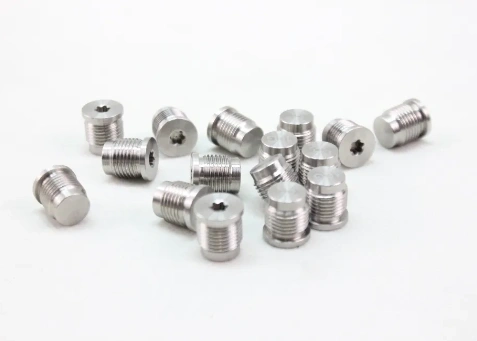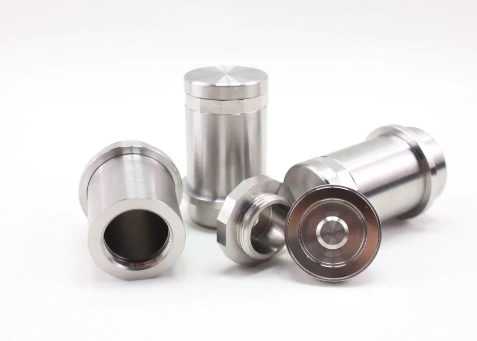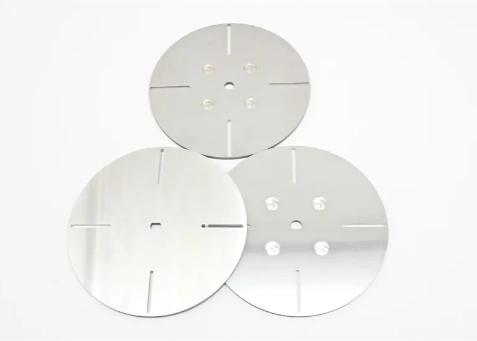Tungsten-Copper Alloy – The Perfect Combination of High Electrical and Thermal Conductivity and Resistance to Arc Erosion
In the wake of the present-day industries that require excellent conductivity and durability at the same time, tungsten-copper alloy has become recognized as one of the most dependable engineering materials. It does so by merging the high melting point and hardness of tungsten with the superb conductivity of both heat and electricity of copper, and thus forming a composite that withstands extreme conditions while the conventional metals often quit.
Grasping the Concept of Tungsten-Copper Alloy
Tungsten-copper alloy is actually a pseudo-alloy that cannot be melted and blended the usual way because of the considerable difference between the melting points of tungsten and copper. The production of tungsten-copper alloy is, therefore, done using either the powder metallurgy or the infiltration method. The production method employed guarantees that there is a uniform microstructure and strong bonding between the two constituents.
Tungsten and copper proportions can be varied in such a way that the alloy characteristics are customized to specific industrial applications—tungsten content is increased to improve strength and arc resistance, whereas the copper content is increased to improve electrical and thermal conductivity.
Key Properties and Advantages
Excellent Electrical and Thermal Conductivity
Copper grants conductivity to the utmost degree, so the alloy has a great power to conduct both heat and electricity at the same time. This property of tungsten-copper alloy makes it perfect for electrical contacts, heat sinks, and parts that are going to be subjected to high current loads, to mention some applications. It cuts energy loss, and even if the temperatures are changing, it will provide uninterrupted performance.
Resistance to Arc Erosion and High Temperatures
Tungsten with a melting point of more than 3400°C and also high hardness, these qualities keep the material from the surface damage which is usually caused by electrical arcing. The alloy will not melt, deform or erode and this makes it suitable for switchgear contacts and arc-resistant devices where reliability is a must.
Mechanical Strength and Dimensional Stability
Tungsten-copper alloy does not lose its strong structure even if it is exposed to mechanical stress and thermal cycling to the extreme. It does not have the property of pure copper to soften or deform easily, thus securing the long-time dimensional stability in the areas where pressure and heat are high.
Industrial Applications
With patience and ingenuity, tungsten-copper alloy is an exceptional combination of electrical conductivity and mechanical strength, reflecting the very qualities of the most advanced materials.
- • Electricity and Electronics: It is good for circuit breakers, high-voltage switches, and electrical discharge machining (EDM) due to its capability of enduring heavy arc and heat every time.
- • Aerospace and Defense: Used in the manufacture of plasma contacts and rocket nozzle liners that withstand extreme heat and electrical stress.
- • Thermal Management: Acts as a heat sink or spreader in high power electronic devices, efficiently dissipating heat and assuring the stability of the system.
- • Machining and Tooling: Resistance welding and EDM processes are the areas of its application because of its precision, conductivity, and wear resistance.
Manufacturing and Performance
The fabrication of tungsten-copper alloy entails the pressing of tungsten powder into a specific shape, followed by sintering and finally, pouring of the molten copper into the voids of the tungsten matrix. This technique produces a compact and high-performing material with consistent thermal and electrical characteristics. The general compositions range from 70% to 90% tungsten, depending on the use, thus, providing a good blend of conductivity and arc resistance. Such a diversity of grades allows the designers to pick the perfect one according to their particular technical requirements.
Why Tungsten-Copper Alloy Defines Modern High-Performance Materials
Tungsten-copper alloy remarkably integrates the heat and electric features of copper along with the toughness and heat resistance of tungsten. Its even performance in extreme mechanical, electrical, and thermal stress makes it a must-have in modern electrical systems and precision industries. As technology progresses and the need for more sophisticated materials increases, tungsten-copper alloy keeps on demonstrating its worth as one of the most efficient materials for high-performance applications.
FAQs about Tungsten-Copper Alloy
1. What is tungsten-copper alloy used for?
It is widely used in electrical contacts, EDM electrodes, circuit breakers, and heat sinks that require high conductivity and arc resistance.
2. How is tungsten-copper alloy made?
It is produced through powder metallurgy or infiltration, which ensures strong bonding and uniform structure between tungsten and copper.
3. Why does tungsten-copper alloy resist arc erosion?
Tungsten has a very high melting point and hardness, allowing the alloy to withstand intense electrical arcing without melting or degrading.
4. Can tungsten-copper alloy compositions vary?
Yes. Adjusting the tungsten-to-copper ratio allows engineers to balance conductivity, strength, and erosion resistance for different applications.
5. Which industries commonly use tungsten-copper alloy?
It is essential in electrical, aerospace, automotive, and electronic industries that require materials capable of handling both high heat and current loads.

 EN
EN AR
AR FR
FR DE
DE HI
HI IT
IT JA
JA KO
KO PT
PT RU
RU ES
ES ID
ID LV
LV VI
VI HU
HU MS
MS GA
GA BE
BE YI
YI EU
EU


